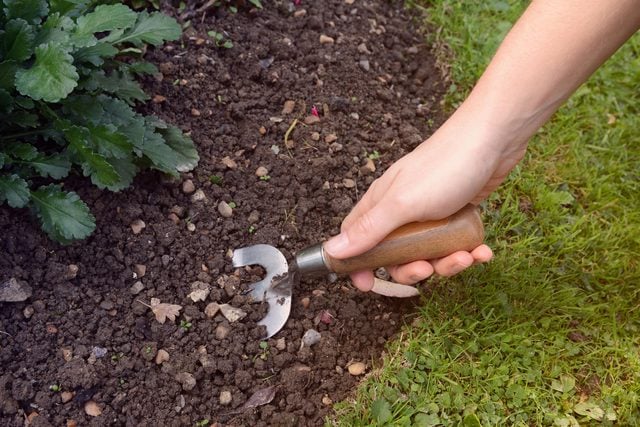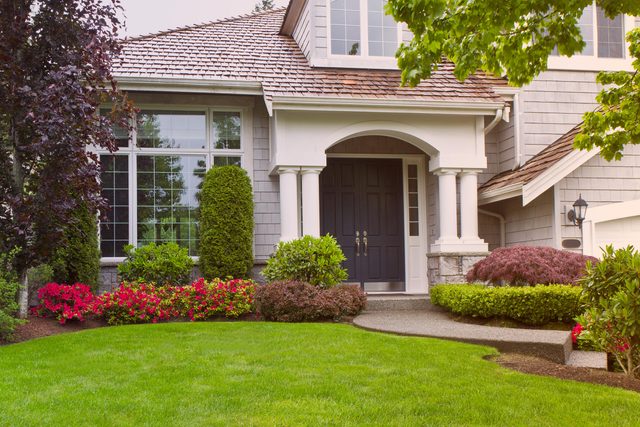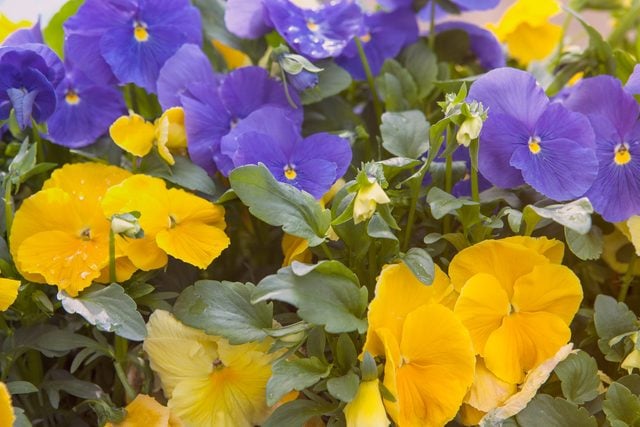Add as much as 15% to your home’s value with these expert landscaping tips.
1 / 18
 ISTOCK/BRADWOLFE
ISTOCK/BRADWOLFE
Ditch the Mower Bag
Those grass clippings will become food for earthworms and microbes that will help make your lawn green and healthy. Plus, once they dry out they’ll help provide the soil with nitrogen.
2 / 18
 ISTOCK/SOLIDAGO
ISTOCK/SOLIDAGO
Look at Your Landscape From Inside the House
If you have a room with a big window, make sure it looks good from there too. You want to be able to enjoy your view of your yard. Ensuring that you like how it looks from multiple angles will help you to make the best decisions for your natural climate as well as your personal taste.
3 / 18
 ISTOCK/VGAJIC
ISTOCK/VGAJIC
Don’t Fill Everywhere With Plants and Flowers
By next spring, you’ll have a weeding and pruning nightmare. Unless you’ve got the money to pay a gardener, or the free time to tackle pruning a whole yard, be smart with what you plant and where. Try to include some low-maintenance plants to balance out the landscape without adding to your workload.
4 / 18
 ISTOCK/CHARLIETURCHETTA
ISTOCK/CHARLIETURCHETTA
“Pretty” Red Mulch Might Not Be Best
It has been found to contain arsenic and other harsh chemicals that can be harmful to children and pets and will contaminate your soil. Opt for safer options that will keep your kids and furry friends safe. Natural mulch is a better option. If you really want color, then look for bright foliage or flowers instead.
5 / 18
 ISTOCK/UKRAINEC
ISTOCK/UKRAINEC
Hate Bagging Leaves?
You don’t have to. If there’s just a light layer, go over them with your mower and leave them on your lawn. As they break down, they’ll help limit weeds from popping up. Plus, you’ll be helping out pollinators who depend on those fallen leaves to lay their eggs.
6 / 18

Send a Soil Sample to Be Tested
Dig down six to seven inches deep and then gather two cups of dirt into sample bags. Mail them off to a local agricultural agency to find out what nutrients you need. Once you’ve got that information, you can try to amend your soil as needed to make sure that it can support your plants of choice.
7 / 18
 ISTOCK/SARAHDOOW
ISTOCK/SARAHDOOW
If You Find a Flower You Like, Always Buy More Than One
Plant clumps of species in odd numbers, such as five or seven in one area, or repeat the groupings throughout your landscape for a unifying effect. This way you can enjoy your favorites while keeping your space looking cohesive. Plus if one plant doesn’t do well you’ll have others to hold you over until you can get a replacement.
8 / 18
 ISTOCK/TAB1962
ISTOCK/TAB1962
DIY Landscapers Plant Beds Too Narrow, Close to House
You want to extend your garden beds out at least one- to two-thirds of the house’s height, if not more. Your plants need ample room to grow and blossom. Plus, extending the beds out further looks better visually than keeping things crammed back against the house.
9 / 18
 ISTOCK/CJP
ISTOCK/CJP
Weed Fabric is Generally a Waste of Money and Time
I once had a customer whose beds had seven layers of weed fabric, yet she still had weeds. I guess she kept thinking, If I put down just one more layer, the weeds will stop coming. Instead, opt for mulch. It’s more natural. You will have to add to it occasionally, but you’ll be doing yard work anyway so it shouldn’t add too much to your workload.
10 / 18
 ISTOCK/BANKSPHOTOS
ISTOCK/BANKSPHOTOS
Most Lawn Fertilizers are 30% Nitrogen, Which is Way Too Much
Look for a fertilizer with time-releasing water-insoluble nitrogen and use it only twice a year on a steady schedule, like on Memorial Day and after Labor Day. In general, well-irrigated and older lawns need less fertilizer. Just make sure you’re aware of the risks of using fertilizer and other house cleaning products if you do.
11 / 18
 ISTOCK/NICHOLASHOFFMAN
ISTOCK/NICHOLASHOFFMAN
Watch Out for “Purple Loose-Strife,” or “Lythrum Salicaria”
Though it’s inexpensive and has a lovely flower, it’s an invasive species that will spread everywhere and choke out other plants. Instead, opt for native plants as those will support native pollinators and won’t cause as many problems in your yard.
12 / 18
 ISTOCK/DARRYA
ISTOCK/DARRYA
One Inch of Water Per Week Is Ideal
Infrequent watering encourages roots to grow deeper to find ground water, creating a stronger plant. Plus, if you live somewhere affected by a drought, your plants will already be adjusted to the water restrictions.
13 / 18
 ISTOCK/MAGMOS
ISTOCK/MAGMOS
Look at a Color Wheel When Choosing Garden Flowers
Colors that are opposite of each other, like yellow and purple, look beautiful together. Picking plants that are complimentary colors will make your yard stand out and may even introduce you to some new favorite blooms.
14 / 18
 ISTOCK/DARRYA
ISTOCK/DARRYA
Hire a Designer, But Landscape Yourself
That will keep you from making costly mistakes, like putting plants in the wrong spot. A designer can help you figure out what plants will work best for your space and can take concerns like color, level of maintenance needed, and space into account.
15 / 18
 ISTOCK/GOLFLADI
ISTOCK/GOLFLADI
Don’t Plant Bushes, Spruce Trees at the End of Your Driveway
They may look nice, but they can block your view of oncoming traffic. Keep your line of sight clear. Having a beautiful yard is nice, but you need to prioritize safety. There are plenty of other options for your driveway that will look stunning without obscuring your view.
16 / 18
 ISTOCK/TROPPER2000
ISTOCK/TROPPER2000
Don’t Overspend and Landscape and Then Neglect to Maintain
It happens all the time. Someone breaks the bank on gorgeous landscaping only to neglect to water the plants. Take your time and ability to maintain the yard into account. If you know you don’t have much space in schedule for yard work, opt for plants that require little to no maintenance.
17 / 18
 ISTOCK/VICTORASS88
ISTOCK/VICTORASS88
Plant Too High, Rather Than Too Deep
People have a tendency to over-dig, and the roots of the tree or plant can get buried, causing it to suffocate, or water accumulates at the root level and rots out the roots. Do your research on how deep plants need to be to thrive and when in doubt plant high.
18 / 18
 ISTOCK/LANDSCAPER
ISTOCK/LANDSCAPER
Stay Hydrated
Landscaping is a workout, so stay hydrated while you’re out in the sun. Sunburns and heatstroke are no joke; put on your SPF, drink your water and try to do your yard work and planting in the mornings or the evenings when the sun isn’t as hot.
Family Handyman




